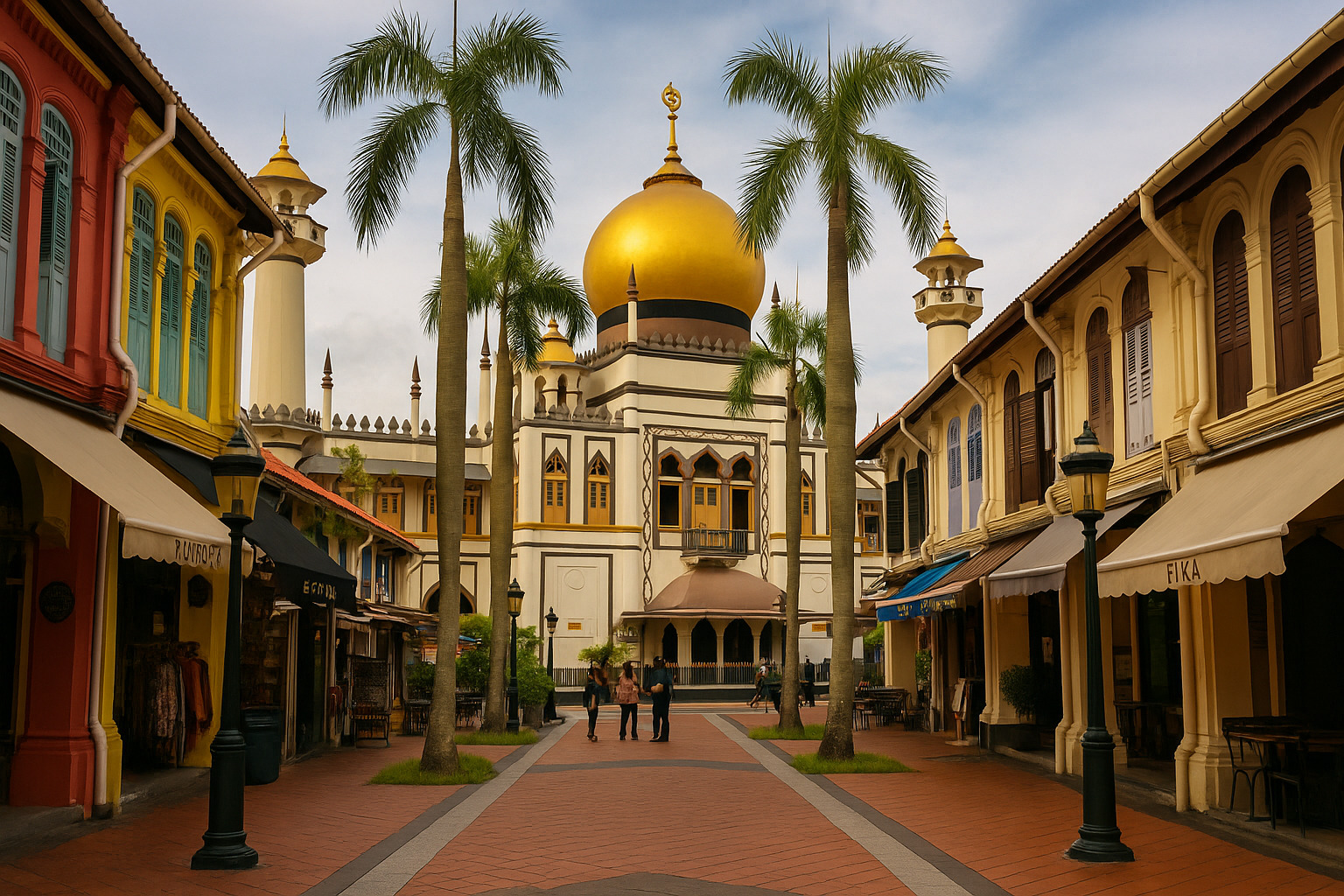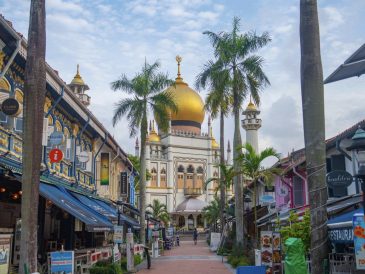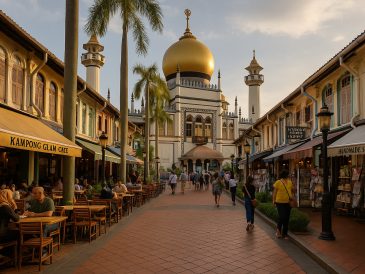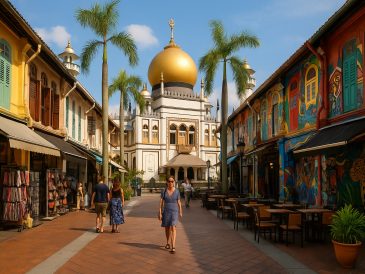Kampong Gelam isn’t just another historic district—it’s one of Singapore’s oldest communities still alive with purpose. The streets speak in layers: royal legacy, trade stories, and daily life. Its evolution hasn’t erased the past but added rhythm and color to it. This neighborhood isn’t staged. It lives, breathes, feeds, and prays.
A Royal Start, A People’s Ground
Once the seat of Malay royalty, Kampong Gelam was assigned to Sultan Hussein Shah and his followers in 1822. The name comes from the gelam tree, once used in traditional medicine and boatmaking. Sultan Gate still holds the core: the Sultan Mosque with its golden dome, the former palace turned Malay Heritage Centre, and streets where handwritten Arabic calligraphy lines wooden signs.
A Grid of Cultures and Streets
The district stretches across Haji Lane, Arab Street, Bussorah Street, Kandahar Street, and Baghdad Street. Each one carries its own rhythm.
- Haji Lane is narrow, loud, and photo-ready. Independent fashion stores, hand-painted murals, and music slipping out from behind mismatched doors.
- Arab Street is a contrast—bustling with textile merchants, prayer rugs, Turkish lamps, and fabric rolls stacked sky-high.
- Bussorah Street opens wide like a stage with palm trees and full views of the mosque. It’s lined with restaurants serving biryani, mezze, and teh tarik.
This isn’t thematic curation. It’s the flow of generations working side by side: Muslims heading to prayer, baristas perfecting a flat white, tailors waiting by the doorframe.
Landmarks That Do More Than Stand Still
- Sultan Mosque: Built in 1824, rebuilt in 1932, it stands with its black-and-gold dome and prayer hall that fits 5,000. At sunset, its call to prayer cuts across the neighborhood.
- Malay Heritage Centre: Former royal residence turned museum. It holds stories of the Bugis, Baweanese, and other communities that made this area home.
- Gedung Kuning: A yellow mansion next door, once a royal residence, now home to restaurants and cultural showcases.
These are more than structures. They are anchors that still shape the schedule of the streets around them.
Faith in Daily Life
Friday afternoons change the traffic. The mosque fills, the carpets roll out, and even alleyways go quiet. Religion here isn’t for show. It shapes dress, business hours, and food. Halal signs aren’t marketing—they’re a mark of respect and belonging.
You’ll see young Muslims shopping for modestwear beside tourists picking up perfumes made from oud and frankincense. Hijabs sold alongside embroidered kebayas. Faith lives here without needing defense.
From Trade Hub to Creative Pocket
Kampong Gelam’s trading past remains in the details: hand-stitched songkoks, attar bottles in glass cabinets, furniture workshops tucked behind cafés. Yet, it’s also a testing ground for design studios, music gigs, and printmakers. Artists have painted the walls, but they haven’t painted over them. The stories stay underneath.
What stands out:
- Murals that don’t just decorate—they respond to history
- Vinyl stores, jazz clubs, and curated bookstores
- Calligraphy studios using scripts most visitors can’t read, but still admire
Street Food Meets Sit-Down Elegance
No overview is real without the food. Kampong Gelam feeds everyone:
- Zam Zam: since 1908, serving murtabak and biryani
- Hjh Maimunah: Nasi Padang with roots in tradition and Michelin Bib recognition
- Sweets from baklava to kueh
- Shisha pipes hissing by nightfall, kids on bikes, the smell of grilled lamb
Menus aren’t made for tourists. They’re made for families who’ve been eating here for decades.
Past, Present, and Everything Between
Kampong Gelam doesn’t rely on nostalgia. It invites return. Whether it’s someone tracing family roots, a weekend wanderer, or a first-time visitor trying teh halia, the neighborhood welcomes all without adjusting itself.
This isn’t a place that tries to represent Singapore. It shows how Singapore formed. One prayer, one plate, one painted wall at a time.



